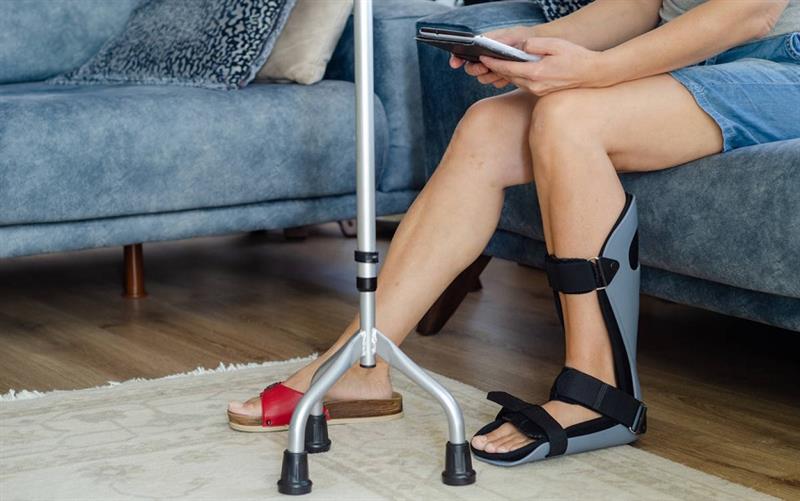
To enable you to move around as efficiently as possible, your ankle-foot orthosis (AFO) is essential. You will be dependent on it for hours at a time, every day, therefore you must take care of your AFO and maintain it in good operating order. In addition, you'll want to know how to wear one so that you can be as comfortable as possible.
Here, we've distilled years of experience into ten guidelines for maintaining and wearing your AFO so you may get the most out of your orthotic device.
1. Put on the Proper Shoes
One common error individuals make is assuming they can wear the same-size shoe with their AFO and that any shoe will work.
Choose a lace-up shoe that fits your foot and the AFO well for maximum comfort. The ideal fit should be snug but comfortable, allowing the AFO to move about somewhat.
Additionally, heel height counts; you want the same heel height in each shoe. The alignment of your device and your gait will both be impacted by the incorrect heel height.
2. Everything Is About the Sock
To ensure that the AFO doesn't rub on your exposed skin and to increase comfort, we advise placing a cotton sock between your skin and the device. To ensure that the sock stays in position and doesn't slide down your leg, it should be long enough for you to be able to fold or roll the top of the sock back over the AFO.
Since wool socks are often thicker, some of our patients have reported that they also function well. Follow your comfort level and what functions best for you.
You can even apply baby powder to your leg before putting on the sock during humid seasons of the year to reduce wetness and friction. Think about changing your socks multiple times a day as well.
3. Perfect Practice Makes Perfect
New AFO users frequently experience initial difficulties walking with their devices. But with further practice, this will fade. It is true that practice makes perfect. Before you go outside, give yourself plenty of opportunities to walk about with your physical therapist or in the security of your own house.
4. Look for any pressure areas
Pressure regions may occasionally develop as a result of your AFO. These red patches represent pressure points on your foot caused by the AFO that may be causing discomfort or perhaps decreasing circulation.
Regularly check for pressure points. Make sure you pay close attention to any reddish areas that persist after 20 minutes, and contact your orthotist if you have any concerns regarding the fit of your AFO. It could be required to make a change.
5. There Will Be Modifications
Before you have the ideal fit, expect to work with your orthotist to make some changes to your AFO. This is a very typical occurrence. If the AFO doesn't fit perfectly at first, don't worry. You and your orthotic specialist will work together to make gradual changes until you achieve the perfect fit.
6. Begin Gradually
Give your body some time to acclimate to wearing an AFO if you've never done so before. Thus, begin by wearing the brace for no more than an hour at a time, and then remove it and take a nap. Wear the orthosis and rest your leg alternately over the first few days.
You can increase how long you wear it over the course of the next week until you can wear it comfortably for as long as you need to.
7. Organizing Your Device
There will be multiple thermoplastic components in your device. Cleaning is required for these at least once a week. When cleaning these areas, use a mild soap and be sure to rinse the pieces well after cleaning.
Don't soak your AFO in water either. Simply give it a hand cleaning instead of soaking it, as this could harm your gadget.
8. Greasing Your Equipment
It will also be necessary to periodically oil the metal joints. Your orthotist can assist you in selecting the appropriate lubricant and advise you on the best form of lubrication regimen. One of the greatest methods to maintain your AFO operating as it should is to lubricate it properly and on a frequent basis.
9. Take Care When Drying Your Device
AFOs are susceptible to heat sources that are direct. Allow them to come to room temperature by air. Make sure you don't dry your AFO with a hair drier or any other direct heat source, like an open fire or a space heater. The gadget can be left out in the open after being towel-dried. Using a fan is one approach to shorten the device's drying time.
10. Avoid Making Changes by Yourself
Although it can be quite tempting to try to adjust an AFO oneself, we strongly advise against doing so and instead to consult an orthotist. These are intricately crafted, precisely calibrated pieces of machinery that require a skilled touch to modify.